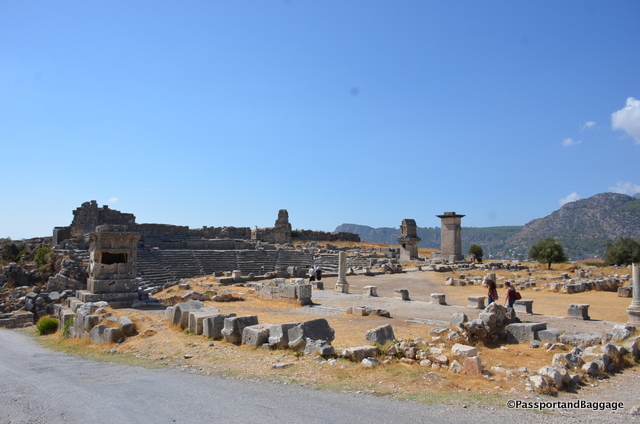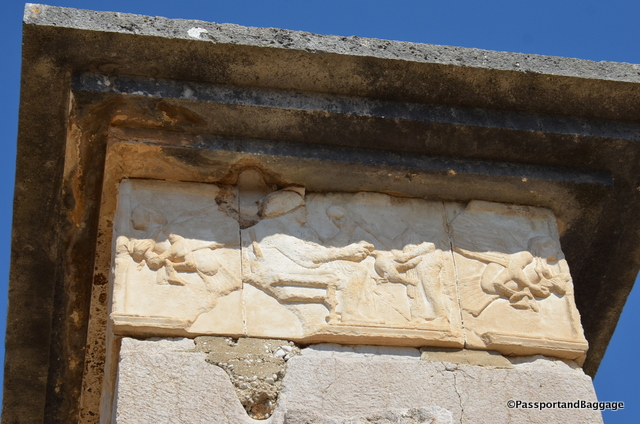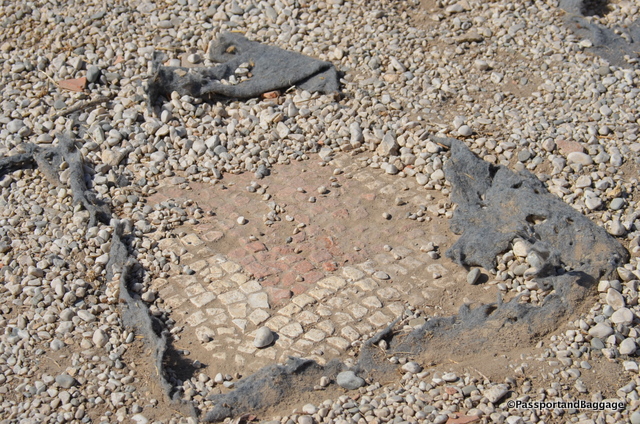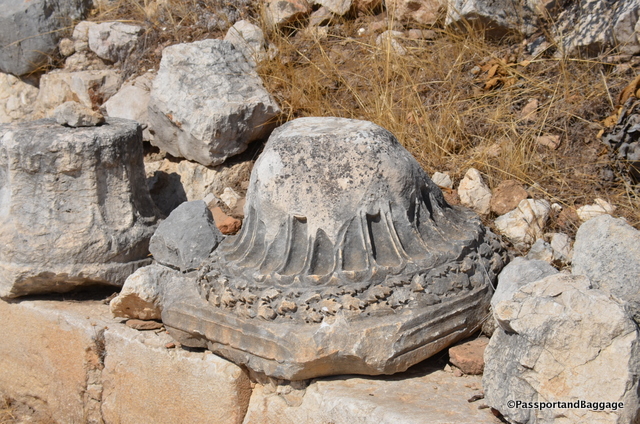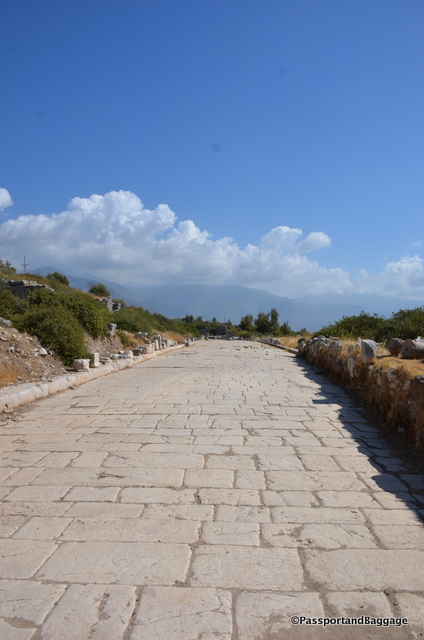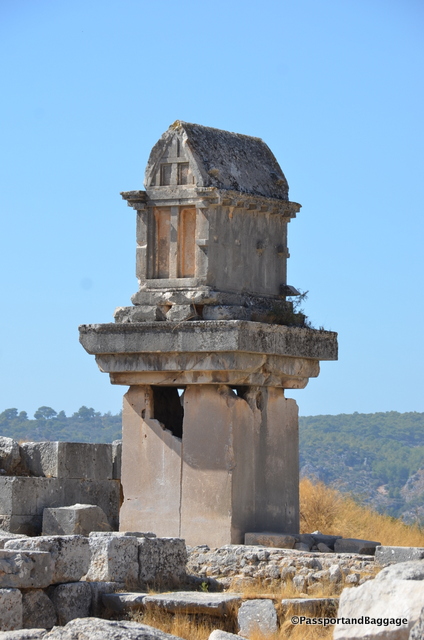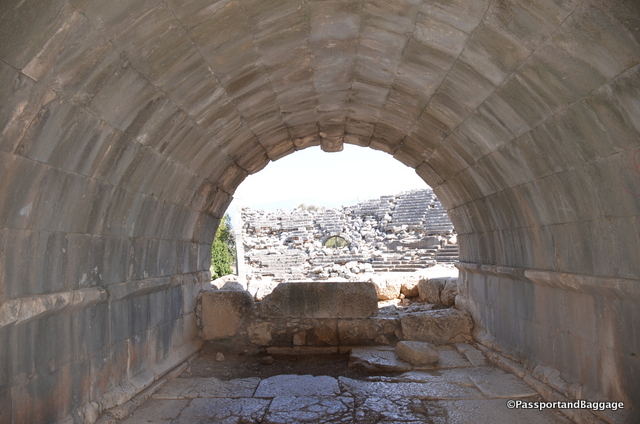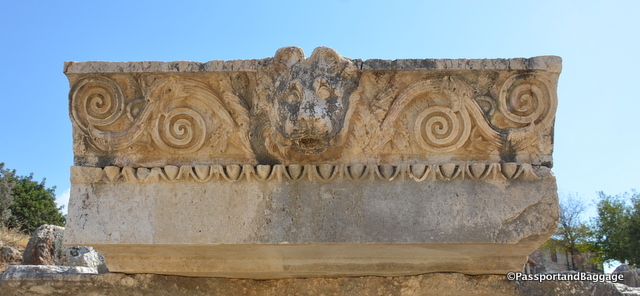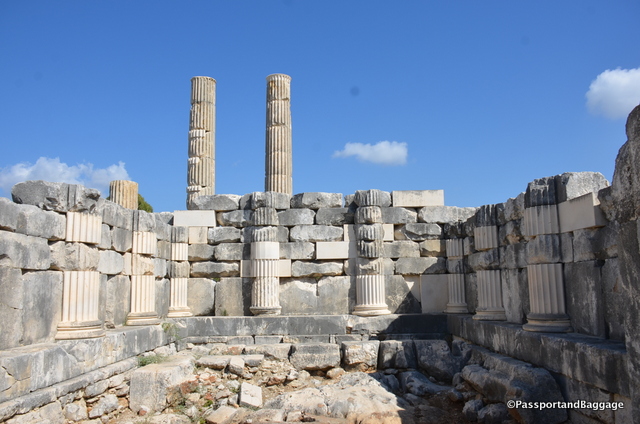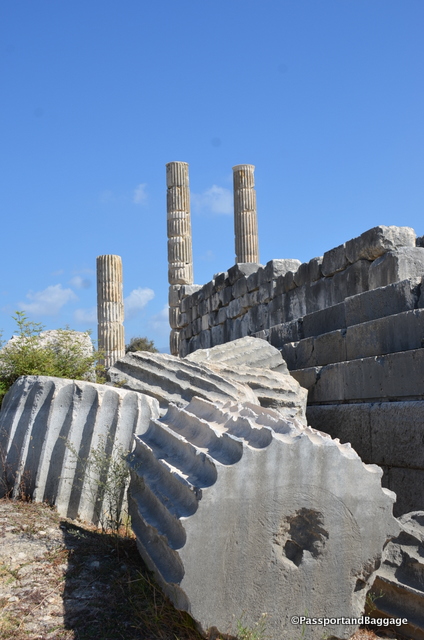October 9, 2016
I am on the Mediterranean and have already written about the tombs of Myra. I did so without really addressing the Lycian culture. Now is the time to do so.
Lycia was a geopolitical region in Anatoli in what are now the provinces of Antalya and Muğla on the southern Mediterranean coast, and Burdur Province inland from the Mediterranean. Historically it dates to the times of ancient Egypt and the Hittite Empire in the Late Bronze Age (3300-1200 BC).
In 43 AD Lycia was incorporated into the Roman Empire. After the fall of the Byzantine Empire in the 15th century, Lycia was under the Ottoman Empire, and was inherited by the Turkish Republic on the fall of that empire. The Greeks were forcibly removed during the population exchange between Greece and Turkey in 1923.
One of the larger Lycian sites in this area is the city of Xanthos and its accompanying religious site Letoön. The history of Xanthos is rather violent. In 545-546 the Xanthosian men set fire to their women, children, slaves and treasure before making their final doomed attack upon invading Persians who were led by Commander Harpagos. Xanthos grew out of this tragedy but the story repeated itself in 42 BC when Brutus attacked the city during the Roman civil wars in order to recruit troops and raise money. Brutus was shocked by the Lycians’ suicide and offered his soldiers a reward for each Xanthosian saved. Only 150 citizens were rescued.
Xanthos was deserted during the first wave of Arab raids in the 7th century.
The buried site of Xanthos was found in 1838 by Sir Charles Fellows. Like so may explorers of the time, he hauled most of the artifacts to England, they now reside in the British Museum.
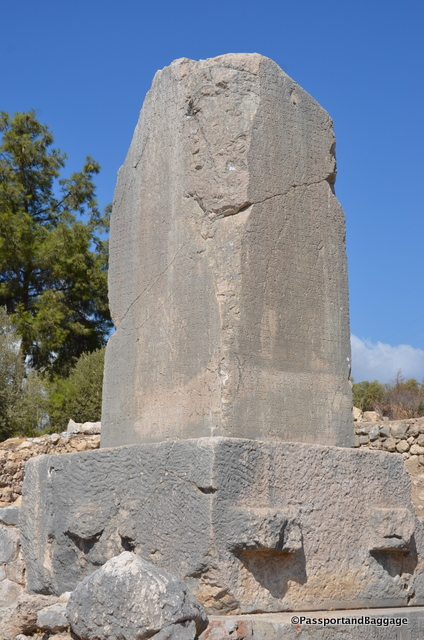 When one travels the world and sees ruins across our great planet, they tend to run together. However, at most every site something stands out and makes me go WOW. For me, at Xanthos, this moment was gazing upon this large stone with its inscription in Lycean. It is the longest Lycian inscription known, at over 250 lines. Linguistically it falls into three parts; On the south and east side and part of the north side it is written in the normal Lycian language; then there is a poem of twelve lines in Greek; but the rest of the north side and all of the west is in a different form of Lycian found elsewhere, only on a tomb in Antiphellos, a town many miles away.
When one travels the world and sees ruins across our great planet, they tend to run together. However, at most every site something stands out and makes me go WOW. For me, at Xanthos, this moment was gazing upon this large stone with its inscription in Lycean. It is the longest Lycian inscription known, at over 250 lines. Linguistically it falls into three parts; On the south and east side and part of the north side it is written in the normal Lycian language; then there is a poem of twelve lines in Greek; but the rest of the north side and all of the west is in a different form of Lycian found elsewhere, only on a tomb in Antiphellos, a town many miles away.
The Lycian language is not really understood, the inscription, evidently gives a narrative account of a dead hero’s exploits, and is undeciphered. It does apparently contain a number of recognizable proper names, from which the approximate date and some idea of the contents can be garnered.
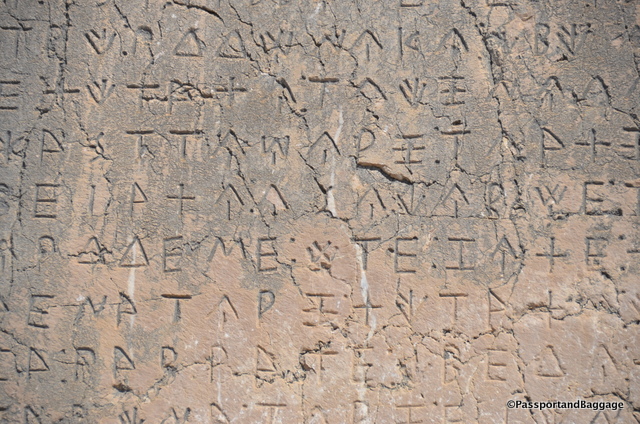 Lycian was an Indo-European language, which included cuneiform and hieroglyphics; it had its own alphabet, which was closely related to Greek.
Lycian was an Indo-European language, which included cuneiform and hieroglyphics; it had its own alphabet, which was closely related to Greek.
Lycian became extinct around the beginning of the first century BC, replaced by the Ancient Greek language.
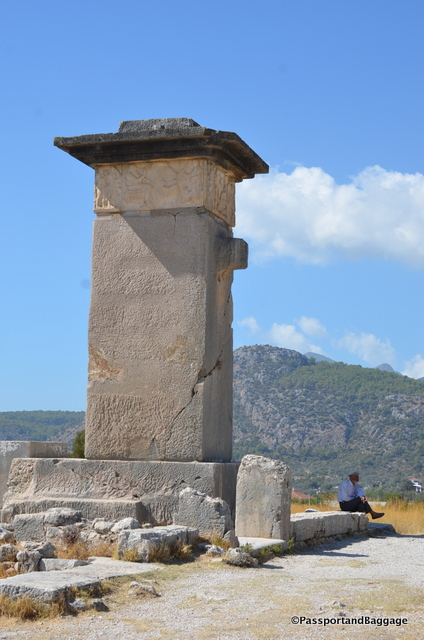
The chamber at the top of this pillar was once marble, decorated with reliefs. Called the “Harpy Tomb”; it was previously believed that the winged women figures in the frieze were harpies (monsters from Greek mythology with the head of a woman and the body of a bird). It is now thought that these figures may depict sirens carrying off the souls of the dead. These are replicas, the originals are in the British Museum.
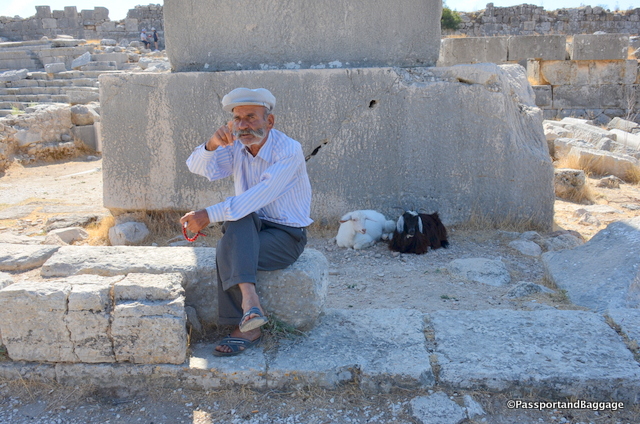
This friendly goat-herder is happy to tell everyone the story of Xanthos. The only English I understood of his was British Museum, which I heard many, many times over.
Just a few miles from Xanthos is Letoön, which dates back to the late sixth century BCE. Letoön, administered by Xanthos, was not an actual city but a religious center and an important political meeting point for the Lycian League, which was the first democratic federation.
Letoön is home to three temples that have been excavated thus far, one dedicated to Leto, hence the name Letoön. The second is dedicated to Artemis, it is said that the mother of Apollo and Artemis gave birth to the twins here, while hiding from Hera. The third temple is dedicated to Apollo.
Letoön was the center of pagan cults until perhaps the 5th century AD when Arabs ravaged Lycia and the area started to silt up with sand brought down by the Xanthos River. It is believed to have been abandoned by the 7th century AD.
During Roman Times, the Emperor Hadrian founded an emperor worship cult at the site. Christianity later replaced pagan beliefs and in the 5th century AD a church was built using stones from the old temples.
The Lycian cult of Leto was one of the many forms of the widespread mother-goddess religion, which originated in ancient Anatolia. Even in those times women could preside over the national assembly that was held each autumn.
